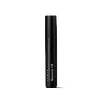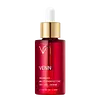What's inside
What's inside
 Key Ingredients
Key Ingredients

 Benefits
Benefits

 Concerns
Concerns

 Ingredients Side-by-side
Ingredients Side-by-side

Caprylic/Capric Triglyceride
MaskingDicaprylyl Carbonate
EmollientCetyl Ethylhexanoate
EmollientSqualane
EmollientPrunus Armeniaca Kernel Oil
MaskingVegetable Oil
Skin ConditioningTocopherol
AntioxidantHelianthus Annuus Seed Oil
EmollientArgania Spinosa Kernel Oil
EmollientSimmondsia Chinensis Seed Oil
EmollientMacadamia Integrifolia Seed Oil
Skin ConditioningOlea Europaea Fruit Oil
MaskingRosa Canina Fruit Oil
EmollientCamellia Sinensis Seed Oil
HumectantPrunus Amygdalus Dulcis Oil
Skin ConditioningTocopheryl Acetate
AntioxidantButyl Methoxydibenzoylmethane
UV AbsorberLavandula Angustifolia Oil
MaskingCitrus Paradisi Peel Oil
MaskingGeranium Maculatum Oil
MaskingCitrus Aurantium Bergamia Fruit Oil
MaskingCitrus Medica Peel Oil
Citrus Aurantium Dulcis Oil
MaskingParfum
MaskingCaprylic/Capric Triglyceride, Dicaprylyl Carbonate, Cetyl Ethylhexanoate, Squalane, Prunus Armeniaca Kernel Oil, Vegetable Oil, Tocopherol, Helianthus Annuus Seed Oil, Argania Spinosa Kernel Oil, Simmondsia Chinensis Seed Oil, Macadamia Integrifolia Seed Oil, Olea Europaea Fruit Oil, Rosa Canina Fruit Oil, Camellia Sinensis Seed Oil, Prunus Amygdalus Dulcis Oil, Tocopheryl Acetate, Butyl Methoxydibenzoylmethane, Lavandula Angustifolia Oil, Citrus Paradisi Peel Oil, Geranium Maculatum Oil, Citrus Aurantium Bergamia Fruit Oil, Citrus Medica Peel Oil, Citrus Aurantium Dulcis Oil, Parfum
Candida Bombicola/Glucose/Methyl Rapeseedate Ferment
AntimicrobialOlea Europaea Fruit Oil
MaskingHelianthus Annuus Seed Oil
EmollientActinidia Chinensis Seed Oil
EmollientSilybum Marianum Ethyl Ester
Skin ConditioningCitrullus Lanatus Seed Oil
EmollientAleurites Moluccanus Seed Oil
Skin ConditioningCaprylic/Capric Triglyceride
MaskingRosa Canina Fruit Oil
EmollientSimmondsia Chinensis Seed Oil
EmollientCorylus Avellana Seed Oil
EmollientPrunus Avium Seed Oil
EmollientLithospermum Erythrorhizon Root Extract
Skin ConditioningPlukenetia Volubilis Seed Oil
EmollientAngelica Gigas Root Extract
Skin ConditioningPrunus Amygdalus Dulcis Oil
Skin ConditioningRosmarinus Officinalis Leaf Oil
MaskingSpilanthes Acmella Flower Extract
Skin ConditioningCitrus Aurantium Bergamia Fruit Oil
MaskingCitrus Aurantium Dulcis Peel Oil
MaskingLavandula Angustifolia Oil
MaskingCedrus Deodara Wood Oil
MaskingThymus Vulgaris Oil
MaskingJuniperus Mexicana Oil
MaskingLeptospermum Petersonii Oil
MaskingLupinus Albus Seed Extract
Skin ConditioningRosa Centifolia Flower Oil
MaskingJasminum Grandiflorum Flower Extract
MaskingDaucus Carota Sativa Seed Oil
EmollientCupressus Sempervirens Oil
MaskingBoswellia Serrata Oil
MaskingCitrus Aurantium Amara Flower Oil
MaskingTocopherol
AntioxidantEucalyptus Globulus Leaf Oil
PerfumingCandida Bombicola/Glucose/Methyl Rapeseedate Ferment, Olea Europaea Fruit Oil, Helianthus Annuus Seed Oil, Actinidia Chinensis Seed Oil, Silybum Marianum Ethyl Ester, Citrullus Lanatus Seed Oil, Aleurites Moluccanus Seed Oil, Caprylic/Capric Triglyceride, Rosa Canina Fruit Oil, Simmondsia Chinensis Seed Oil, Corylus Avellana Seed Oil, Prunus Avium Seed Oil, Lithospermum Erythrorhizon Root Extract, Plukenetia Volubilis Seed Oil, Angelica Gigas Root Extract, Prunus Amygdalus Dulcis Oil, Rosmarinus Officinalis Leaf Oil, Spilanthes Acmella Flower Extract, Citrus Aurantium Bergamia Fruit Oil, Citrus Aurantium Dulcis Peel Oil, Lavandula Angustifolia Oil, Cedrus Deodara Wood Oil, Thymus Vulgaris Oil, Juniperus Mexicana Oil, Leptospermum Petersonii Oil, Lupinus Albus Seed Extract, Rosa Centifolia Flower Oil, Jasminum Grandiflorum Flower Extract, Daucus Carota Sativa Seed Oil, Cupressus Sempervirens Oil, Boswellia Serrata Oil, Citrus Aurantium Amara Flower Oil, Tocopherol, Eucalyptus Globulus Leaf Oil
Ingredients Explained
These ingredients are found in both products.
Ingredients higher up in an ingredient list are typically present in a larger amount.
This ingredient is an emollient, solvent, and texture enhancer. It is considered a skin-softener by helping the skin prevent moisture loss.
It helps thicken a product's formula and makes it easier to spread by dissolving clumping compounds.
Caprylic Triglyceride is made by combining glycerin with coconut oil, forming a clear liquid.
While there is an assumption Caprylic Triglyceride can clog pores due to it being derived from coconut oil, there is no research supporting this.
Learn more about Caprylic/Capric TriglycerideCitrus Aurantium Bergamia Fruit Oil is the oil from the bergamot orange. It is native to Italy.
This ingredient is used to add fragrance to products. It contains limonene, linalool, and linalyl acetate.
The term 'fragrance' is not regulated in many countries. In many cases, it is up to the brand to define this term. For instance, many brands choose to label themselves as "fragrance-free" because they are not using synthetic fragrances. However, their products may still contain ingredients such as essential oils that are considered a fragrance.
When used topically, Citrus Aurantium Bergamia Fruit Oil is a photosensitizer due to its furanocoumarins. Photosensitizers make the skin and eyes much more sensitive to sunlight. Photosensitizers are linked to skin cancer.
However, more cosmetics using Citrus Aurantium Bergamia Fruit Oil are removing the furanocoumarins.
Bergamot oil was also found to have anti-inflammatory, antibacterial and antifungal properties.
Learn more about Citrus Aurantium Bergamia Fruit OilHelianthus Annuus Seed Oil is the oil derived from the seeds of a Sunflower. Sunflower seed oil is non-fragrant. It is an emollient, meaning it helps to soften the skin.
Sunflower seed oil contains many fatty acids. The fatty acids found in sunflower seeds include (from highest amount to least): linoleic acid, myristic acid, palmitic acid, stearic acid, arachidic acid, oleic acid, and linolenic acid.
These fatty acids help the skin create ceramides. Ceramides play a role in repairing the skin barrier.
Helianthus Annuus Seed Oil helps moisturize the skin. This in turn helps the skin look more rejuvenated and smoother.
Sunflowers are rich in vitamin E.
Historians believe Indigenous cultures of North America domesticated sunflowers before corn. Thus they relied on sunflower oil for a variety of uses. One such use is moisturizing skin and hair.
Sunflower seed oil may not be fungal acne safe. We recommend speaking with a professional if you have any concerns.
Learn more about Helianthus Annuus Seed OilLavandula Angustifolia Oil is more commonly known as lavender essential oil. It is considered a fragrancing ingredient.
Lavender imparts a famous scent. While the smell is lovely, this ingredient and may sensitize skin in topical products. This is because about 85% of the oil is made up of linalool and linalyl acetate.
When exposed to air, these two compounds become strong allergens. This ingredient exhibits cytotoxicity at low concentrations; amounts of 0.25% have been shown to damage skin cells.
A study from Japan found this ingredient caused lavender sensitivity after widespread exposure.
Lavender essential oil has some antimicrobial, antibacterial, and anti-inflammatory properties. However, the cons of this ingredient may outweight the pros.
More research is needed to confirm lavender essential oil's effects when used in aromatherapy.
Lavandula Angustifolia is known as the English Lavender and famous for creating purple fields in Provence, France.
Learn more about Lavandula Angustifolia OilOlea Europaea Fruit Oil is the fixed oil obtained from the ripe fruit of the Olive. In other words - olive oil.
The primary contents of olive oil are glycerides of the fatty acids linoleic, oleic and palmitic.
Olive oil also contains antioxidants such as Vitamin E. Antioxidants may help reduce signs of aging by fighting unstable free-radical molecules. It also contains Vitamins A (retinol), D, and K.
The squalene in olive oil makes it a great emollient. Emollients help soothe and soften your skin by trapping moisture in. This makes olive oil a great skin moisturizer.
Studies show olive oil to have antibacterial and antifungal properties in low concentrations. Another study found olive oil irritated sensitive oily skin. We always recommend speaking with a professional about using this ingredient in your routine.
Due to the fatty acid content, this ingredient may not be fungal-acne safe.
Learn more about Olea Europaea Fruit OilPrunus Amygdalus Dulcis Oil comes from the sweet almond, a tree native to Iran. This oil has no fragrance and is non-volatile.
Almonds contain healthy fats, vitamins, and minerals. It is a rich source of Vitamin E, a great antioxidant and skin conditioning ingredient. Sweet almond oil contains fatty acids such as linolenic acid and triglycerides.
The content of sweet almond oil makes it a great emollient; it can help soften and hydrate your skin. Emollients create a barrier over your skin to trap moisture in. Sweet almond oil has antioxidant properties.
Those with an almond allergy should be careful of this ingredient and speak with a professional about using it in your skincare.
This ingredient may not be fungal-acne safe.
Learn more about Prunus Amygdalus Dulcis OilRosehip Oil is a non-fragrant plant oil. Rosehips are a fruit from a rose bush and are edible. This oil has skin conditioning and hydrating properties.
Rosehip contains Vitamin C, Vitamin E, fatty acids and linolenic acids. These nourish your skin barrier. Having hydrated skin may help reduce the appearance of fine-lines and wrinkles.
Another great component of Rosehip Oil is Vitamin A, or retinol. Vitamin A encourages your skin to create more collagen.
Rosehip oil may help with reducing pigmentation. The lycopene and beta-carotene have skin-lightening properties. However, more studies are needed to confirm this.
Learn more about Rosa Canina Fruit OilThis oil comes from the seeds of the desert shrub called Jojoba. It is more commonly known as jojoba oil, a non-comedogenic oil.
Jojoba oil does not contain fragrance and has many fatty-acids, making it a great soothing ingredient.
It also contains Vitamin E, a great moisturizing ingredient. Vitamin E is also an antioxidant and protects your skin against oxidative damage.
This ingredient humectant properties, meaning it helps draw moisture from the air. This helps keep your skin hydrated.
While jojoba has antibacterial properties, it is only able to kill some strains of bacteria.
Studies also show it helps in wound healing. In fact, Indigenous cultures have used jojoba as a moisturizer and to help treat burns for centuries.
Fun fact: Jojoba oil similar to natural human skin sebum, so it has a great effect on dry skin. It is also promising with helping to regulate sebum production.
Due to its fatty acid content, Jojoba oil may not be fungal acne safe. We recommend speaking with a professional if you have any concerns.
Learn more about Simmondsia Chinensis Seed OilTocopherol (also known as Vitamin E) is a common antioxidant used to help protect the skin from free-radicals and strengthen the skin barrier. It's also fat soluble - this means our skin is great at absorbing it.
Vitamin E also helps keep your natural skin lipids healthy. Your lipid skin barrier naturally consists of lipids, ceramides, and fatty acids. Vitamin E offers extra protection for your skin’s lipid barrier, keeping your skin healthy and nourished.
Another benefit is a bit of UV protection. Vitamin E helps reduce the damage caused by UVB rays. (It should not replace your sunscreen). Combining it with Vitamin C can decrease sunburned cells and hyperpigmentation after UV exposure.
You might have noticed Vitamin E + C often paired together. This is because it is great at stabilizing Vitamin C. Using the two together helps increase the effectiveness of both ingredients.
There are often claims that Vitamin E can reduce/prevent scarring, but these claims haven't been confirmed by scientific research.
Learn more about Tocopherol